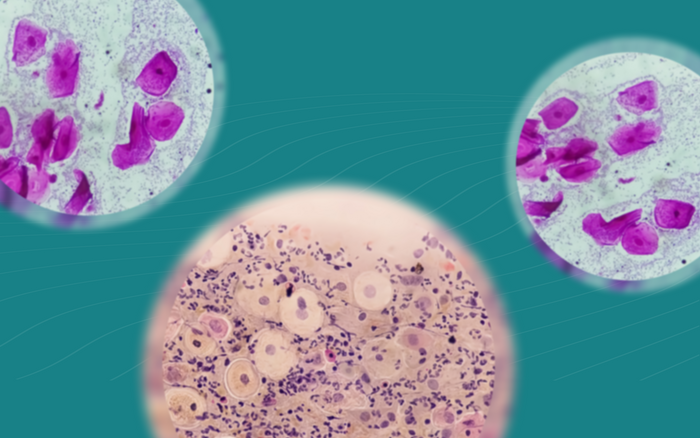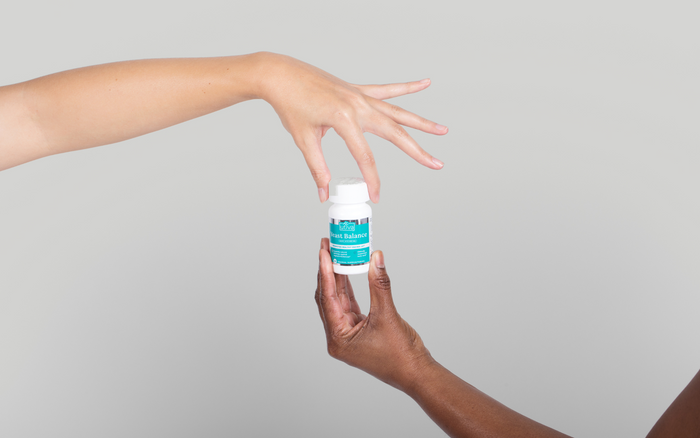Listen Up Ladies: 9 Things Every Woman Should Know About UTIs

If you’re a woman, chances are you’ve been there. The constant need to pee, the strange colour when you do, and - of course - that buuurning sensation.
Urinary tract infections are an all-too-common occurrence for girls of all ages. Up to 60% of all women will experience a UTI in their lifetime. What’s more? Women are 8 times more likely than men to get a UTI. So, what’s the deal?
A UTI is caused when bacteria enters the urethra and makes its way up the urinary tract to the bladder. UTI symptoms in women include frequent peeing, burning when you pee, cloudy or bloody urine, a strange smell to your urine, and pelvic pain. Most of the time, we can simply flush out bacteria when we pee. But several risk factors can cause it to stick around and multiply.
What exactly are these UTI causes for women? And how can we stop them before they start? Here are 9 things every woman should know about UTIs.
-
UTIs love our urethras
No shade to the female anatomy, but it automatically puts women at a greater risk for developing UTIs. Since the female urethra is so close to the vagina and anus, bacteria doesn’t have to travel as far to cause an infection. On top of that, a woman’s urethra is shorter than a man’s. That means it can get to the urinary tract faster.
The solution? Keep things extra clean down there. Make sure you’re always wiping front to back and stock up on cleansing wipes to kill off any excess bacteria. We can’t change our anatomy, but we can change how we take care of it.
-
UTIs become more frequent with age
UTIs don’t only hang with the younger crowd. Urinary tract infections can become more frequent as women age. Menopause causes estrogen levels to decrease, which changes the normal bacteria in your vagina and makes the skin around the vagina more fragile. These factors can increase the risk of a UTI.
Hot tip: to prevent bacteria from spreading and soothe skin irritations, ask your doctor to prescribe a topical or vaginal estrogen.
-
Yes, sex increases the risk of UTIs
Increased sexual activity is a common cause of UTIs in women. During intercourse, new bacteria can enter the vagina. Plus, bacteria already in the vagina can suddenly move around and find its way to the urethra and bladder.
To keep UTIs at bay, make sure to pee before and after sex to flush bacteria out of your body. After peeing, wipe the vagina and rectum with a cleansing wipe for extra peace of mind.
-
Safe sex isn’t always UTI-safe
Not to sound like your high school sex ed teacher, but safe sex is incredibly important. In Canada, about 75% of adults will have at least one type of HPV in their lifetime. Not to mention the 100,000 cases of chlamydia reported every year nationwide. To protect yourself from STIs, some form of birth control is a must.
At the same time, many types of birth control can increase your risk of getting a UTI. Non-lubricated latex condoms and spermicides can irritate the skin, change the pH balance in the vagina, and kill off good bacteria. Diaphragms are another UTI trigger, since they put pressure on the urethra and make it harder to empty your bladder.
To avoid an infection, consider choosing a different birth control method, like the pill or an IUD. If you want to keep using condoms, use a water-based lubricant at the same time to prevent irritation.
-
UTIs during pregnancy are more common
The female body goes through a world of changes during pregnancy. In the urinary tract alone, the urethra expands, pee becomes more concentrated, and the bladder stays full for longer. All of these conditions are ideal for bacteria to spread.
On top of that, your growing little one can put a lot of pressure on the bladder and urinary tract. This causes bacteria to get trapped and urine to leak.
UTIs while pregnant can lead to high blood pressure, premature delivery, and other complications for mom and her baby. In some cases, the UTI can even spread to the kidneys and cause long-term damage. If you’re pregnant and think you might have a UTI, contact your doctor right away to start treatment as soon as possible.
-
UTIs can strike more than once
In fact, recurrent UTIs are incredibly common. If a UTI pops up within 3 months of the first infection, it’s probably a recurrent one.
Even if a UTI is treated, several factors could cause it to come back over and over again. 95% of all recurrent UTIs in women are reinfections. In other words, the same bacteria from the first infection has held on for dear life and regrown after treatment.
To avoid recurrent UTIs, always finish your entire antibiotics treatment. If the infection persists, your doctor will likely check to see if you have an abnormality in your urinary tract.
-
UTI treatment is a no-brainer
This one is a non-negotiable. If you think you might have a UTI, getting it treated should be your top priority. The longer you have a UTI, the more serious it can become.
If left untreated, a UTI can spread to the kidneys. It can also cause sepsis, a potentially life-threatening illness that sends infection-fighting chemicals to fight healthy tissues instead.
As soon as you feel UTI symptoms coming on, contact your doctor to start an antibiotics treatment. While you wait for the antibiotics to kick in, drink lots of water. This will continue to move bacteria out of your system while diluting your urine to avoid that awful sting.
-
What you heard about cranberries is true
For years, cranberries have been suggested for preventing UTIs. Turns out, the rumours are true.
Cranberries are packed with a powerful compound called proanthocyanidins (PACs). PACs are proven to interfere with bacteria’s ability to stick to the bladder wall. In other words, cranberries can stop bacteria from setting up camp in your urinary tract.
To boost your UTI prevention, incorporate more cranberries into your diet or try a PACs supplement that is specifically formulated to stop UTIs before they start.
-
You can prevent UTIs naturally
While antibiotics are an effective UTI treatment, taking them too often (or incorrectly) can cause antibiotic resistance. This means that bacteria stops responding to antibiotics and continues spreading, which makes treating infections far more difficult.
In fact, the World Health Organization says antibiotic resistance is one of the biggest global health threats. And in the US alone, over 35,000 people die every year from antibiotic-resistant infections.
The good news? You can break the UTI-antibiotics cycle. Several natural remedies can reduce the frequency and severity of UTIs. For example, Utiva’s Cranberry PACs Supplement contains 36 mg of PACs at 15% concentration (one of the highest in the market). It’s clinically proven to prevent UTIs, improve gut and bladder health, and provide a boost of healthy antioxidants.
Take control of your tract
Women may be more susceptible to UTIs, but that doesn’t mean we can’t protect ourselves from them. By staying educated on the top UTI causes in women and making simple adjustments, we can stay UTI-free.
Want to stay up-to-date on UTI health? Our Utiva Community group is a safe space where you can talk with other women about anything and everything UTI-related. We host monthly virtual sessions with doctors and industry experts to help educate and empower women about their health. And if you want to learn more, www.utivahealth.ca is always packed with tips and tricks for UTI prevention.
Knowledge is power
Sign up to our newsletter to keep learning!
Related articles

Yeast Infections vs. Bacterial Vaginosis: The Differences, Similarities, and Natural Solutions
Not sure which vaginal infection you have? Here’s how to spot the differences and choose the best natural treatments for BV and yeast infections.

Gut Health & Aging: Why Probiotics Are Important As You Get Older
How a nutritious diet and high-quality probiotic supplement can help you avoid infection and illness as you age.

Boric Acid for Yeast Infections: An All-Natural Way to Boost Vaginal Health
Discover the best boric acid suppository for treating yeast infections naturally and improving vaginal health.

- Choosing a selection results in a full page refresh.
- Opens in a new window.




